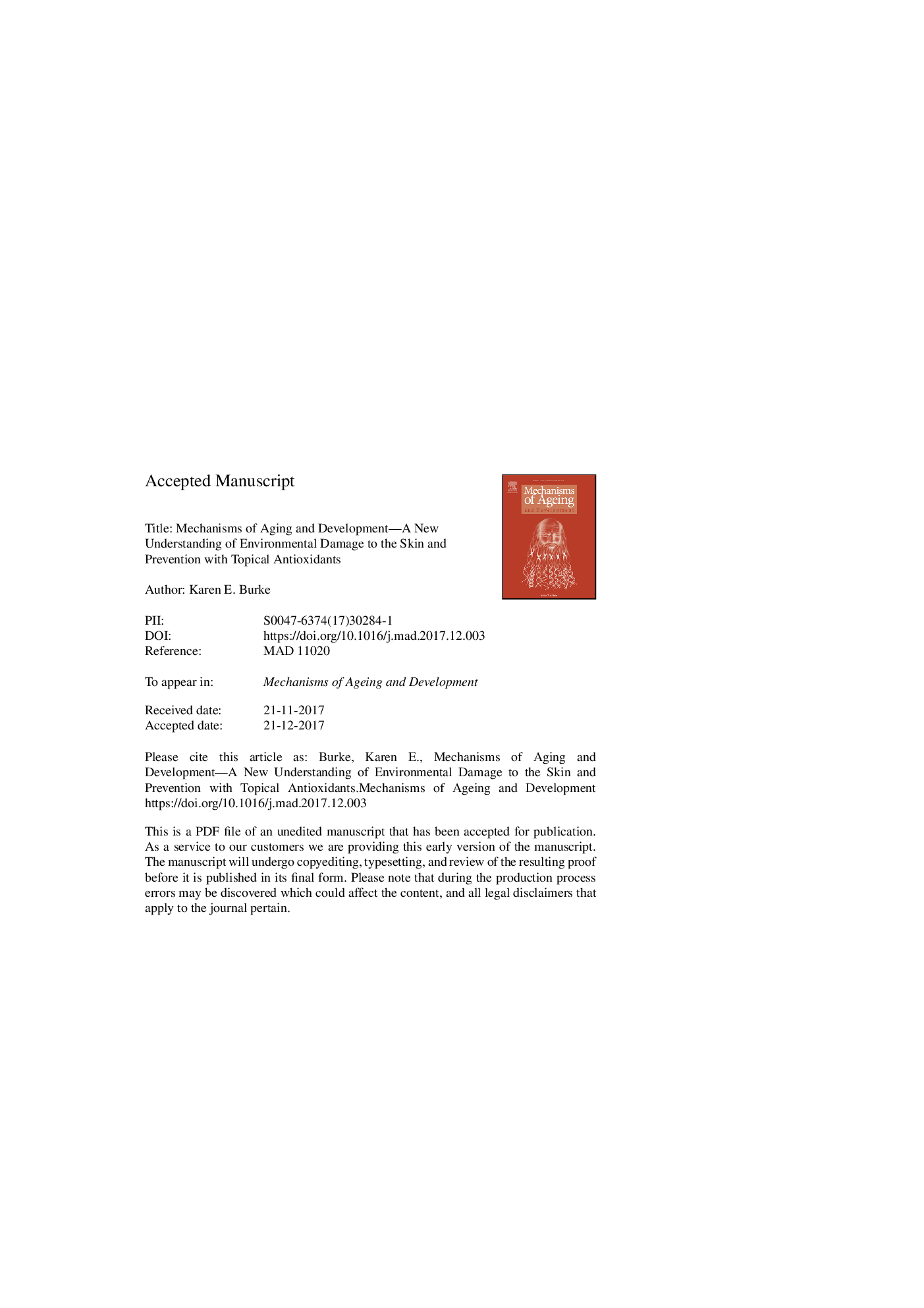| Article ID | Journal | Published Year | Pages | File Type |
|---|---|---|---|---|
| 8284699 | Mechanisms of Ageing and Development | 2018 | 32 Pages |
Abstract
Recent research has given us new insights into the molecular biology of extrinsic aging of the skin. Not only does UV irradiation directly cause photoaging of the skin, but also environmental pollutants significantly damage exposed skin by several mechanisms. Exposure to the noxious gases of air pollution with simultaneous exposure to UVA can act synergistically to initiate skin cancer. Also ozone generated from pollutants reacting with UV induces oxidative stress of the skin's surface via formation of lipid peroxidation products, with cascading consequences to deeper layers. Furthermore, new studies have demonstrated that particulate matter (PM) pollutants can penetrate the skin transepidermally and through hair follicles to induce skin aging via the aryl hydrocarbon receptor (AHR), a recently discovered ligand-activated transcription factor that regulates and protects keratinocytes, melanocytes, and fibroblasts. With this understanding that extrinsic aging of the skin is not only due to photoaging, we realize the necessity of protection beyond sunscreen. Fortunately, correctly formulated topical antioxidants can prevent damage inflicted by both UV and environmental pollution.
Keywords
ARNTEGFRVOCRHETrpNrf2BAP8-OHdGPAH4-ABPHNEUFPFICZBPDEAHRMMPNF-κBConcentrated ambient particlesPsoralen plus UVA4-aminobiphenyl8-hydroxy deoxyguanosineNOxROSHydrogen peroxideUltravioletOzoneReconstructed human epidermisNitrous oxideMEDBenzo[a]pyreneVolatile organic compoundsTryptophanminimal erythema doseparticulate matterWorld Health OrganizationAhR nuclear translocatorlactate dehydrogenaseLDHMatrix metalloproteinasesNitrogen dioxideNO2H2O2Polycyclic aromatic hydrocarbonsPuvaCaPWHOReactive oxygen speciesaryl hydrocarbon receptorEpidermal growth factor receptor
Related Topics
Life Sciences
Biochemistry, Genetics and Molecular Biology
Ageing
Authors
Karen E. Burke,
